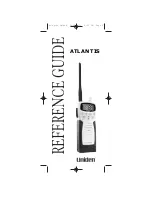
OPTICAL SYSTEMS DESIGN
DOC ID: 10108502
OSD159 OPERATOR MANUAL
PAGE 11
Contact Closure Input/Output signals are connected to the DB25F connector as set out in Table 3.
For the OSD159 Copper version, RS In and RS Out is used to connect the link pair with copper wire to
an existing OSD system with one available RS232 channel (as in Figure 1) or directly from one
OSD159 unit to another.
For the OSD159 fiber version, the optical fiber cable must be terminated with the appropriate optical
connector. Before connection, inspect the ends of the connectors to ensure that no dust or dirt is present
as it could contaminate the modem connector and result in poor performance.
If it is necessary to clean the cable connectors, use isopropyl alcohol and lint free tissue to remove
contamination.
Receive Alarm is an alarm signal that can be connected to control external sources (eg, LED indicator)
to indicate if there is a loss of received signal when the OSD159 LED indicator turns ‘red’. Output is
controlled by a MOSFET that is switched to ground when link is OK (Rated at <1.0A @ 30V
DC
).
2.2.5
CONTACT CLOSURE CONNECTIONS
The OSD159 has eight contact closure channels. The contact closure inputs (Table 3) is driven high. To
operate the contact closure, the input should be switched to ground (see Figure 6).
FIGURE 6: CONTACT CLOSURE INPUT
The contact closure common outputs are on pins 6, 7, 8, 9, 10, 11, 12, and 13 while the normally open
contacts are connected to pin 18, 19, 20, 21, 22, 23, 24, and 25 of the DB25 connector. Maximum
ratings the OSD159 relay can drive is 80mA @ 200V
(max)
.
FIGURE 7: CONTACT CLOSURE OUTPUT
3V
DB25
Input
OSD159
10K
External
Switch
3V
4K7
DB25
Common
Output
OSD159
DB15
N/O
Output

































